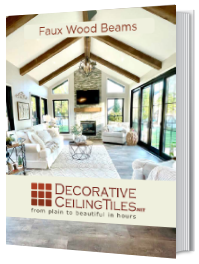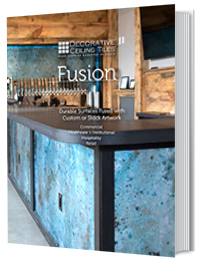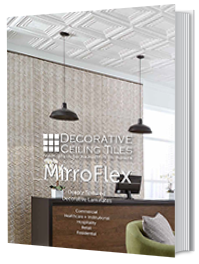Top 6 Faux Brick Patterns for Walls for This Year - Have You Chosen Yours?
Written by Milan Jara on 28th Apr 2022

Have you chosen a faux brick pattern yet? Here are six faux brick wall patterns perfect for creating a bold, modern look.
There are many varieties of faux brick design patterns for walls, and because of the recent surge in the popularity of faux brick this year, many more options are now readily available. They range from simple patterns to elegant and intricate curving shapes, and you can even customize the pattern to include geometric shapes or floral patterns.
Choosing your faux brick pattern design is ultimately based on your preference, but any interior designer will tell you some patterns fit better when matched with coordinating colors. This depends on where they will appear as well as their size and style. A lack of this knowledge can lead to embarrassing and regrettable design choices, which you usually can’t fix easily. We understand it can be difficult to select which pattern is best for your space, so we put together this list of the most prevalent brick patterns for walls this year. This list contains our picks for the top 6 faux brick patterns, plus a few honorable mentions. We included helpful details of each pattern to help you understand a bit more about these patterns and hopefully help make your choice of which is best for you easier.
Bonds, Stretchers, and Headers
So there’s no confusion, we'll first explain that the term “brick bond” or just “bond” is simply a way of describing patterns for laying bricks. They apply to brick walls and patios, walkways, and other types of masonry work. There are many distinct types of brick bonding, each with its own appearance, installation issues, and structural implications. Since we're using faux brick, the only aspect of brick bonds that are of use to us is their appearance.
Familiarize yourself with the terms “stretchers” and “headers” as we use them to describe various brick patterns. Stretchers refer to bricks laid lengthwise along a wall, and headers are bricks laid widthwise along the wall.
The Functions of Brick Bonds
You need bricks (or other masonry units) of the same size or at least similar sizes for most brick bonding. Uniform sizing results in a consistent, repeatable pattern you can apply to any size space. Many brick bond pattern options incorporate interlocking each row of bricks (referred to as a course) with the adjacent courses. Bricks stacked in single-file columns tend to fall. The bricks weave together if stacked so that the joints are staggered or offset between adjoining courses. In this way, the bond reinforces the structure, making the wall more durable. Keep in mind that the thickness of the mortar matters when using it between bricks.
A brick wall can be structural, such as a load-bearing wall, or purely aesthetic, like a brick veneer wall. A structural wall must have a structural bond, whereas decorative walls can have any bond pattern.
1. Basketweave, Diagonal Basketweave, and Half-Basketweave
The basketweave brick pattern is a simple bonding pattern, but that doesn’t mean it isn’t impressive. This popular choice is decorative with a high-end look and easy installation. You can even change it up by installing the basketweave pattern diagonally, incorporating a 45-degree turn on the original design. When you do so, the diagonal basketweave produces a diamond rather than a square for a more intricate look that doesn’t require that much more work.
The half-basketweave pattern uses two horizontal bricks against one vertical brick. The positions of each brick in the grouping alternate from row to row, giving it a visual effect that is similar to a basic basketweave, only slightly more complex.

Photo Courtesy of
Home Depot

Photo Courtesy of
Thisoldhouse

Photo Courtesy of
IStock
2. Herringbone
The herringbone pattern is an age-old and timeless design that refuses to go out of style. It has been around for centuries, with the ancient Egyptians and Romans using it for their roads. People have since continued using it because it's lovely, has a mesmerizing look, and is relatively easy to accomplish.

Photo Courtesy of
Better Homes and Gardens
3. Running Bond
The running bond pattern is classic for walls, but it may require more cuts than other patterns. A straightforward version of a running bond places a single brick over two below it, ensuring the joints between adjacent bricks fall over the middle of the brick below. This pattern is also referred to as the 1-over-2 pattern. Each row begins halfway into the starting brickwork of the previous row, staggering the seams. It’s a simple yet classic look, although not the most visually stimulating. People also enjoy varying this pattern to create joints that are offsetting. This pattern can get even more diverse when varying from row to row.
Use bricks of different colors if you need to express yourself in running bond designs on your faux exposed brick wall. But remember that such a design might look cluttered if there are too many or badly matched color tones. For guaranteed elegance, choose distinct tones of just one color, such as reds, whites, browns, or tans, for the color of your faux bricks when using the running bond pattern design.

Photo by Don Penny/Time Inc. Digital Studio.
4. Whorled
One of the more complicated brick patterns is the whorled brick pattern. Complex designs can have a spectacular effect, but installation difficulties make them unsuitable for DIYers. This extremely ornamental pattern is used frequently as a focal point within a bigger area with a simpler pattern.

Illustration Courtesy of 9to5civil
5. Crosshatch
Brick walls with crosshatch designs are another excellent option since they are simple to produce and have a woven effect pattern, making them appealing to a wide range of homeowners.
To create an even more visually stimulating look, you can do the crosshatch pattern with staggered joints for an added creative touch.

Illustration Courtesy of
A Beautiful Mess
6. Pinwheel
The pinwheel bond is an interesting and great-looking pattern, as it’s a very cool geometric representation of a basic pinwheel. At the center of each pinwheel shape is a half brick, making it stand out, especially when placing a bright and contrasting color there.

Photo Courtesy of
Thisoldhouse
7. Honorable Mention: Traditional
The most often used pattern would probably be the traditional brick pattern of simple straight rows of bricks with the center of the brick in one row aligning with the joint between two bricks in another row. This design is reminiscent of structural walls that are built in this manner for maximum strength and durability. This masonry pattern works well as an accent wall, a fireplace, a backsplash, or even a floor. It's the quickest and easiest pattern for a beginner to complete.

Photo Courtesy of
Brick.com
8. Honorable Mention: Grid
The grid brickwork pattern comprises square sections of faux brick set into a grid-like frame.

Photo Courtesy of
Bob Villa.com
9. Jack-on-Jack
A great pattern for faux brick walls is the jack-on-jack or stacked bond pattern, which is simply bricks carefully laid in neatly aligned rows. The effect of this vision is a look of refined organization and mathematical perfection.

Illustration Courtesy of
The Spruce
10. Spanish
The Spanish bond design is lovely, but it's a little more difficult to produce. It’s hard to align since you form a square by laying four (or more) bricks around a space that is just big enough for a half-brick. The Spanish bond design doesn't work well with curves; it's most commonly used for patios or straight walks that start and end at right angles.

Photo Courtesy of
Amazon.com
11. English Cross
An English cross bond pattern uses alternating courses between stretchers and headers, producing a unique yet simple pattern that is easy to produce. Rows of stretchers alternate with rows of headers in the same fashion as English bond. A major difference is that the stretchers are centered in rows on the joints between the stretchers immediately below them so alternate rows of stretchers align.

Illustration Courtesy of
9to5civil
12. Flemish
Along with some of the other patterns on this list, another centuries-old brick masonry design is the very powerful Flemish bond pattern. With a striking design symmetry, which is visible in this pattern, it consists of the headers of each row centered on the stretchers of the row below, creating a pattern with alternating stretchers and headers.
A Flemish bond is used for two-brick thick walls.

Illustration Courtesy of
9to5civil
Conclusion
As you can see, there are many brick masonry patterns to choose from, but you really can’t go wrong with the ones on this list. Year after year, they are among the most popular and best faux brick pattern choices. The great thing about these patterns is that they all have room for some unique personal touches to be added. Don't be afraid to do something a little different to add a unique creative touch to any of these designs.




